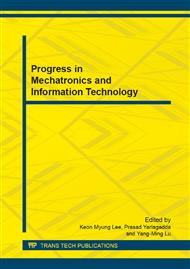p.1087
p.1093
p.1097
p.1102
p.1106
p.1110
p.1118
p.1123
p.1127
Design and Implementation of a Cache System in Web Search Engines
Abstract:
Web search engine caches the results which is frequently queried by users. It is an effective approach to improve the efficiency of Web search engines. In this paper, we give some valuable experience in our design and implementation of a Web search engine cache system. We present there design principles: logical layer processing, event-based communication architecture and avoiding frequent data copy. We also introduce the architecture presented in practice, including connection processor, application processor, query results caching processor, inverted list caching processor and list intersection caching processor. Experiments are conducted in our cache system using a real Web search engine query log.
Info:
Periodical:
Pages:
1106-1109
Citation:
Online since:
November 2013
Authors:
Price:
Сopyright:
© 2014 Trans Tech Publications Ltd. All Rights Reserved
Share:
Citation:


